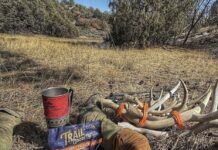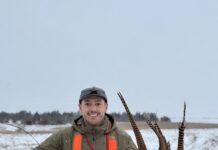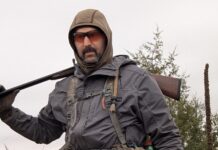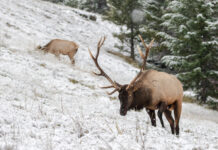

| News for Immediate Release August 19, 2019 Contact: Kristyn Brady, 617-501-6352, [email protected] |
| Unprecedented Analysis Reveals 6.35 Million Acres of Western State Lands Are Landlocked |
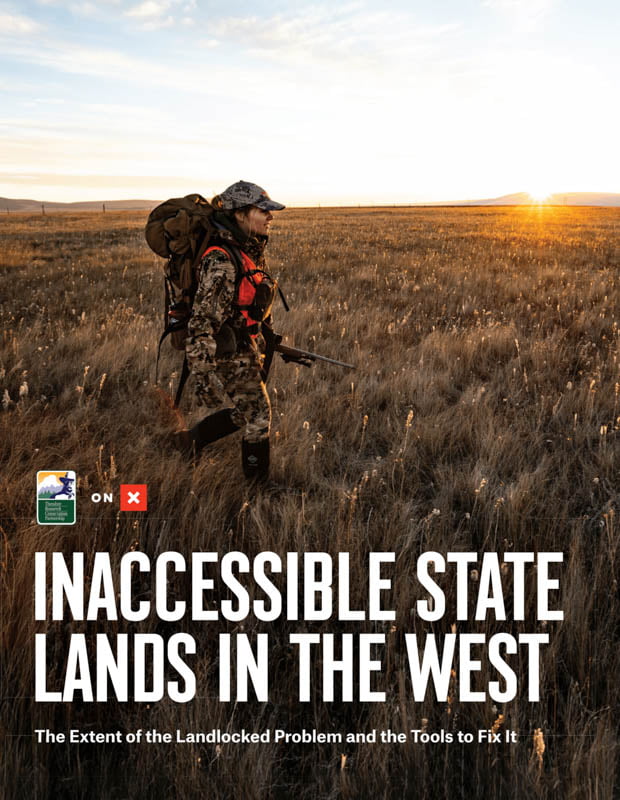 |
| SEATTLE, Wash. — This week, onX and the Theodore Roosevelt Conservation Partnership revealed the stunning results of a collaboration to quantify how many acres of the West’s state lands are entirely surrounded by private land and, therefore, sit inaccessible to hunters, anglers, and other outdoor recreationists. The project builds last year’s report, “Off Limits, But Within Reach: Unlocking the West’s Inaccessible Public Lands,” which showed 9.52 million acres of federally managed public lands in the West are landlocked and lack legal public access. The Findings More than 6.35 million acres of state lands across eleven states in the American West were identified as landlocked by private lands in a study using today’s leading mapping technologies. The findings are now available in a new report, “Inaccessible State Lands in the West: The Extent of the Landlocked Problem and the Tools to Fix It,” which unpacks the issue in unprecedented detail. “With 6.35 million acres of inaccessible state lands, sportsmen and women are missing out on world-class hunting and fishing opportunities all across the West,” says Joel Webster, Western lands director with the Theodore Roosevelt Conservation Partnership. “These are lands that all Americans own, and yet public access is not readily available or guaranteed.” This new report breaks down the 6.35 million acres landlocked across the West into totals for each of the eleven states, highlighting the largest landlocked parcel within each state and which types of state lands are most likely to be landlocked. The vast majority—more than 98%–of landlocked acres in the West are state trust lands, which were granted by the federal government to support public institutions in newly created states. Montana, Arizona, New Mexico, and Wyoming each have more than 1 million acres of landlocked state lands. Nevada has fewer than 1,000, a result of the state having sold off most of its trust holdings over the years. “Our product helps people find places where they can create a memorable outdoor experience, and we are committed to helping open up new opportunities for the recreating public,” says onX founder Eric Siegfried. “To the extent that our technology can help policymakers better understand and address access challenges, we’re eager to play our part.”
The Solutions The report also highlights the various ways in which states are addressing this issue, in hopes that effective solutions become more widely adopted across the West. Among those featured are dedicated staff and programs for improving access, walk-in hunting access programs, and state-side grants from the Land and Water Conservation Fund, which was reauthorized earlier this year. “Many state land agencies have embraced the challenge of opening these lands to recreational access, and it is our hope that this report will help them secure the funding necessary to tackling the full scale of the problem,” says TRCP’s Webster. “The issue of landlocked state lands brings into stark relief the need for full and dedicated annual funding for the Land and Water Conservation Fund, which could be a powerful tool for opening these lands to the public.” “With so many outstanding opportunities on federal public lands managed by agencies like the Forest Service and the BLM, state lands can be overlooked,” adds Siegfried. “But every year, hunters and anglers all across the West enjoy some of their best days afield and on the water by utilizing state land access. And if we can work together on improving the landlocked situation, many more sportsmen and women will be able to have those experiences in the years ahead. Landlocked Acres by State
Learn more and download the full report at unlockingpubliclands.org. |
| Inspired by the legacy of Theodore Roosevelt, the TRCP is a coalition of organizations and grassroots partners working together to preserve the traditions of hunting and fishing. By ensuring access to quality fish and wildlife habitat, we’re also safeguarding the $887 billion that sportsmen and women help contribute to the American economy. The mission behind onX is to always know where you stand: to give outdoor enthusiasts more information about their surroundings than they ever thought possible. onX strives to create the most complete, current, and accurate mapping information available, including landownership, roads, trails, and other access-related data. By providing people the best and most up-to-date data and GPS technology in the palm of their hand, onX seeks to help people have the best outdoor experiences possible. |
You can join the discussion here.

